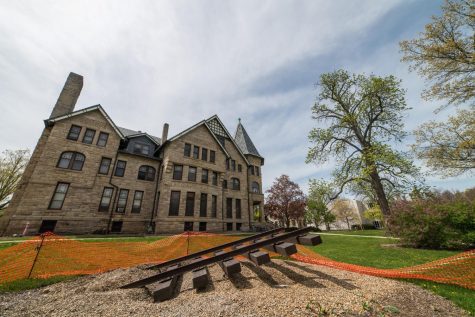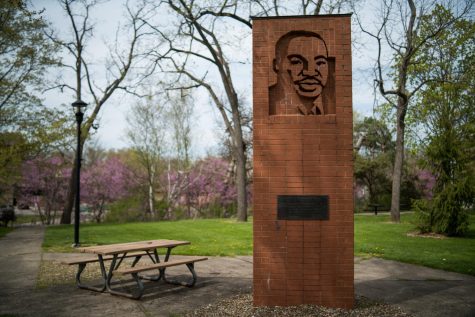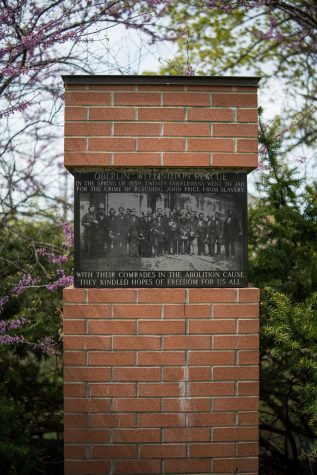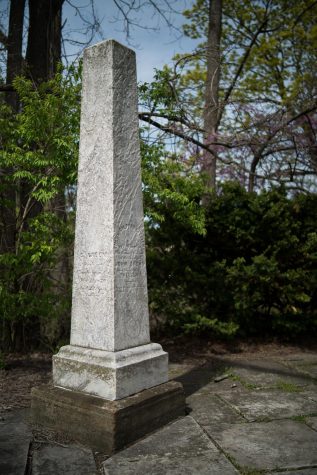Oberlin Monuments Honor Abolitionist Movement, African American Legacy
The Underground Railroad Monument
The railroad track sculpture located outside Talcott Hall was a student art project that commemorates Oberlin’s role in the Underground Railroad. Oberlin’s involvement with the Underground Railroad began when a former Oberlin student brought people who had escaped enslavement to the Oberlin campus.

The Martin Luther King Jr. Monument
The Martin Luther King Jr. Monument is located at the Martin Luther King Jr. Park on Vine Street. Designed by Professor Emeritus of Studio Art Paul Arnold, the monument is a tall, flat, rectangular tower of bricks with an image of Martin Luther King Jr.’s face. Dr. King visited Oberlin several times over the course of his work, first in 1957, after he initiated the Montgomery bus boycott, then again in ’63, ’64, and ’65. In ’64, he gave his speech “The Future of Integration” in Oberlin. In ’65, he visited Oberlin a final time when he spoke at Commencement and was awarded an Honorary Doctorate of Humane Letters.

The Harpers Ferry Memorial
The Harpers Ferry Memorial is also located within Martin Luther King Jr. Park. This monument honors John A. Copeland Jr., Lewis Sheridan Leary, and Shields Green, all of whom were a part of John Brown’s raid, which was an armed revolt of enslaved peoples on the U.S. federal armory and arsenal in Harpers Ferry, WV, in 1859. Although Brown and his entourage were defeated by the U.S. Marines within three days, Brown’s raid was an act of defiance that provided momentum for the beginning of the Civil War. Copeland and Leary lived in Oberlin at the time of the raid, and Green was also rumored to have lived in Oberlin.

The Oberlin–Wellington Rescue Monument
Another monument located in the Martin Luther King Jr. Park is the Oberlin–Wellington Rescue Monument. This piece memorializes the rescue of John Price, an Oberlin resident. In 1858, slave catchers found and captured him, hoping to send him on a southbound railway in Wellington. However, Oberlin residents learned of this situation and worked alongside residents of Wellington to rescue Price. Their efforts began non-violently, but upon failure to negotiate with the slave catchers, they physically overpowered them. With the help of other rescuers, Price was able to escape and hide with John and Mary Fairchild, two Oberlin residents.

The Bench by the Road
The Bench by the Road is a simple black bench located on the corner of North Main Street and East Lorain Street. This bench was placed in honor of author Toni Morrison, as well as enslaved peoples who traveled with the Underground Railroad and resided in Oberlin at a certain point. The bench was erected by the Toni Morrison Society after Morrison herself once noted the lack of monuments in remembrance of enslaved peoples. Morrison was born in Lorain County, and advocated for the placement of one of these benches in Oberlin due to her personal history and Oberlin’s history of abolitionism.










